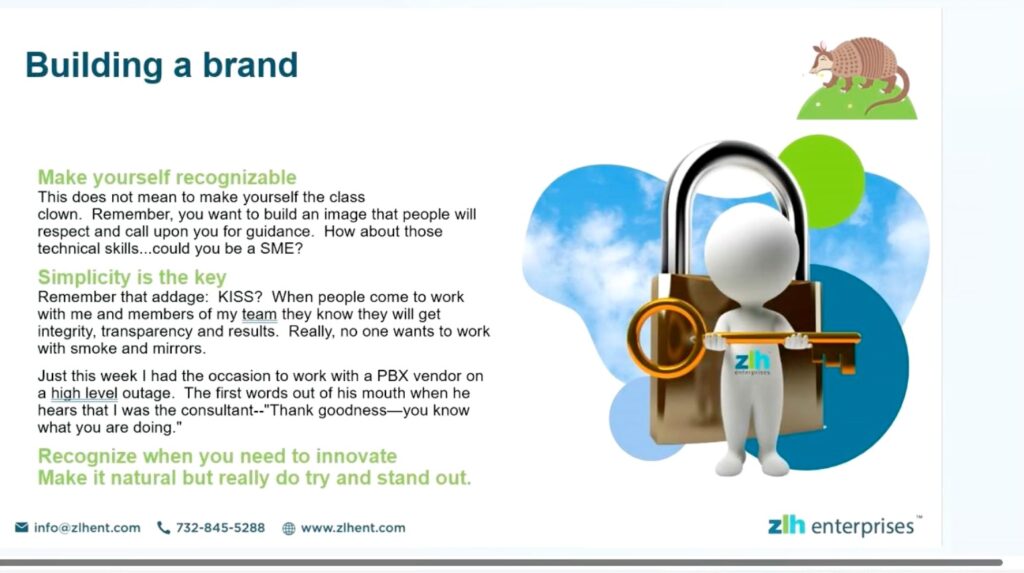How are you perceived by other professionals in your organization? Do you have a “can-do” reputation for completing projects successfully? Or do you sit quietly at your desk or in the field hoping others will recognize your abilities?
To succeed as an IT leader, you need to build your personal brand, according to Zina Hassel, CEO, ZLH Enterprises. “In my career, I have learned that nothing happens by itself,” she said. “You have to empower yourself and be recognized for your performance.”
A technology professional and author of “My Armadillo Skin,” Hassel was the featured speaker at a recent IAUG Women in Technology (WIT) session on “The Importance of Building Your Brand.” She was introduced by Adriane Davis, IAUG board member.
In her presentation, Hassel highlighted her own personal brand, which she called “warrior princess,” because she fights for her customers. As a woman in technology, she added that it’s great to be known for her skills by a largely male team. “I was on a customer outage call and a senior technician said he was glad I was there,” Hassel said. “He said, ‘You know what you’re talking about.’ It’s very nice to get that recognition from someone other than the mirror on the wall.”

A step-by-step process
The first step in building a personal brand is to think about your goals. Do you want to become a subject matter expert in some IT field? Do you want to advance to a managerial or leadership position? Or are you happy in your current role as a valuable resource for your organization?
“It’s important to consider where you want to be in a few years,” said Hassel. “You should also think about the goals of the company and its future.” For instance, a strong company making acquisitions might offer you more career opportunities than one that is struggling to stay afloat financially.
Next, you should conduct a personal SWOT (strengths, weaknesses, opportunities and threats) analysis, just as a large organization does. Is there a subject or area of interest that is one of your core strengths? Are there skills that could use improvement, such as public speaking or writing? But don’t focus all your attention on the weak points, Hassel cautioned. No one is perfect, and you should look ahead with a positive attitude.
Now, look for ways to make yourself recognizable in your organization. For instance, you could get involved on a committee or a project that includes an IT representative. But be sure you have enough time and energy to be an effective group member, Hassel said. “If you’re feeling stressed or things just aren’t working out, it’s better to leave than to make yourself crazy,” she said.
There are plenty of other ways to raise your profile, including writing blogs, recording podcasts, preparing user videos, winning an award, or serving as a mentor to other professionals, to name a few examples. You could also draw on your creativity, and provide innovative ideas or strategies for challenging issues in your organization.
Finally, don’t be afraid to network. Make it a point to talk to others at business or social events, and be willing to share contact information on your smartphone. “Everyone networks all the time,” Hassel added. “In fact, that’s one of the benefits of being an IAUG member. Be prepared to make new friends, as you never know who can help you advance your personal goals.”
